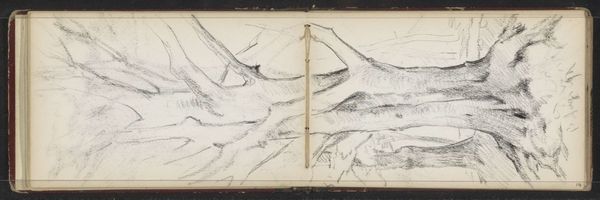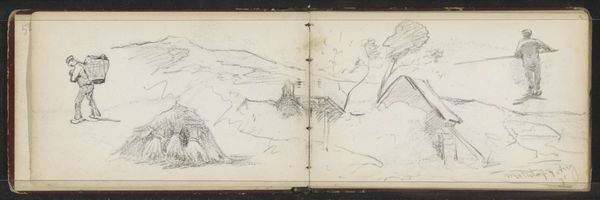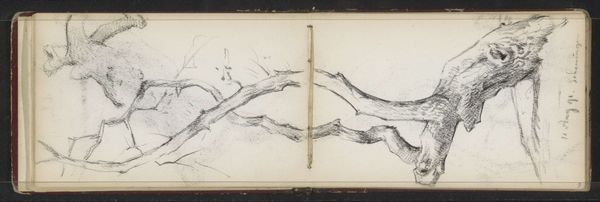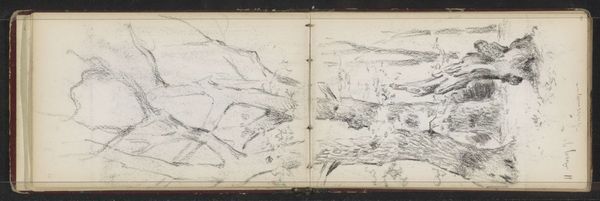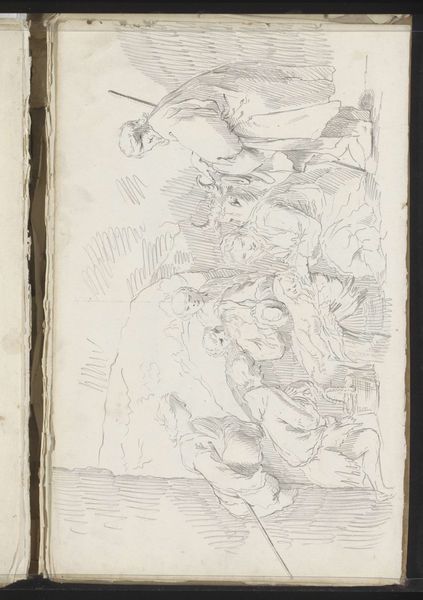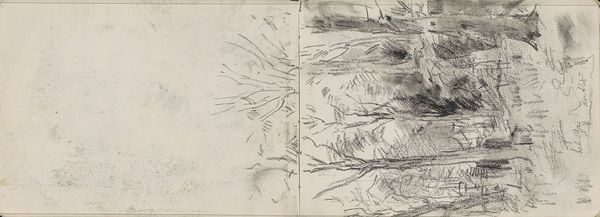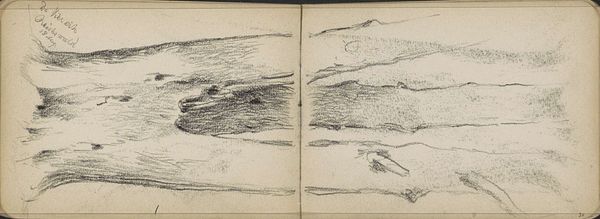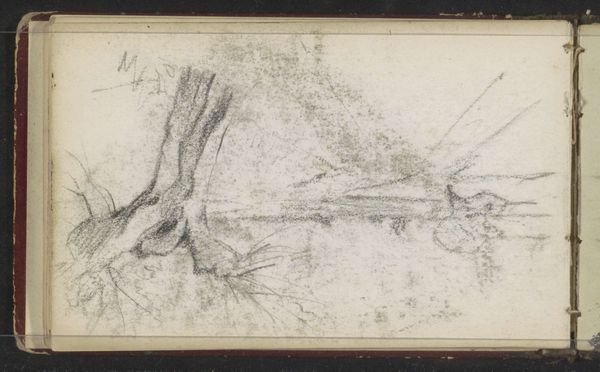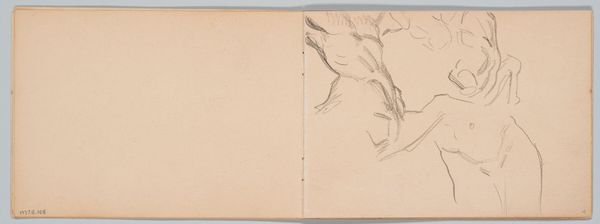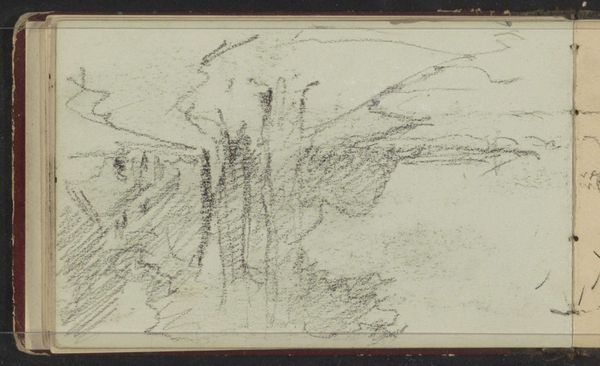
Dimensions: height 101 mm, width 157 mm
Copyright: Rijks Museum: Open Domain
Editor: This is "Bomen," a graphite drawing by Willem Cornelis Rip, made sometime between 1891 and 1898. It's essentially a sketch across a double page. I'm struck by how immediate it feels, almost like glimpsing the artist’s personal notebook. What catches your eye? Curator: That immediacy is key, I think. It allows us a peek into the artist's process of engaging with the landscape. I am drawn to the realism of the depiction - but, I want to ask, does this not remind you of studies by other impressionists, like Van Gogh and his depictions of the natural world? Are we sure we're seeing "just" realism? What do we read into this type of focus at the time, given broader colonial landscape practices? Editor: That's a great point. There’s definitely a similarity in their mark-making! Thinking about colonialism, does this close observation become a form of ownership, or something else? Curator: Precisely. It becomes imperative to think of who these landscapes were "for" - were they a way to document the landscape and take it back to the cities, or were they made simply to exist, capturing a specific fleeting moment? It allows the artist a sense of understanding that might contribute towards environmental consciousness, even accidentally, through sheer care and focus, but for whom? The lack of information in the tags leaves lots unsaid. What feelings do you associate with that knowledge now? Editor: I see what you mean, the context really complicates the "realism". I am interested in the absence of living leaves –it really focuses you on the formal, structural aspects of the trees. It feels stripped down, raw. Curator: Absolutely. The bare trees might even symbolize a kind of resistance to the dominating narratives, or maybe to an uncritical enthusiasm for progress - or at the very least an acknowledgement of the need for observation that has some implicit political force. Seeing these forms could offer different meaning based on a range of contexts and life experiences - it is important to understand our individual interpretation. Editor: It's amazing how much richer this simple sketch becomes with that kind of context. Curator: Indeed. It becomes not just an image of trees but also a point of departure to understanding landscape, the period, and the very active role art plays in shaping our views of both.
Comments
No comments
Be the first to comment and join the conversation on the ultimate creative platform.
